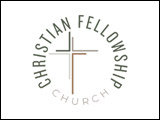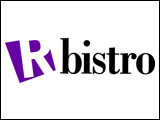It has been over two years since we first heard the words COVID-19. Since then, we have seen over 130,000 Manitobans become ill from the virus and over 1,500 deaths from the disease. Our mental health has taken a hit too, families kept apart, kids seeing extended time away from school, and the normal interactions we need as social beings broken. There is an overwhelming feeling that we need to do things differently if this happens again.
COVID-19 has impacted Manitoba’s agriculture production too. In the hog sector, we have seen labour become more difficult to find, both in our barns and processing plants, while at the same time more has been required of existing staff because of the pandemic, including filling int for those who have become ill. Our supply chains have been interrupted by a shortage of truckers and vaccine requirements. These constrictions have made it more difficult to access feed and export pigs to the United States. Despite the ongoing difficulties, the value-chain has shown tremendous resilience to COVID-19 outbreaks, ensuring a reliable supply of pork to both Canadian and international consumers.
While we all have been dealing with COVID-19, hog farmers in Manitoba have been hit with another coronavirus outbreak: porcine epidemic diarrhea (PED). While PED has no impact on people, and our pork remains safe to eat, the disease is fatal to young pigs. Euthanasia is often the only humane response to prevent extended animal distress.
PED was first found in Canada in 2014. Since then, Manitoba has seen major outbreaks in 2017, 2019, and 2021/22. We seem to be on a two-year cycle for this disease, which is not sustainable in the long run.
PED has taken an enormous toll on farmers whose operations have been impacted. The financial loss has driven some independent producers to consider their future in the industry. The disease has also taken a significant emotional toll on farmers and their staff. Like COVID-19, producers are telling us that we need to do things differently.
Manitoba is fortunate. All links in our value-chain work collaboratively, including producers, independent and company veterinarians, transport companies, and the office of our chief veterinarian. These partnerships may seem natural, but it is actually not common to see industry and government players step out of their silos and openly collaborate.
Using this collaborative model, Manitoba Pork has established a value-chain working group to answer the question, “what do we need to do differently to prevent the spread of PED?” Each participant is being asked to bring forward the pieces of their PED management strategy that they feel are effective and highlight areas where they feel changes could be made. To see the best results possible, members of the working group are looking beyond their own specific issues and will make recommendations based on the best interest of the entire industry.
As part of this effort, Manitoba Pork has engaged the Western College of Veterinary Medicine to review PED management practices in other jurisdictions, including other Canadian provinces and the United States. What works elsewhere that might fit in the Manitoba environment? What alternative practices might look promising, but have been shown to be ineffective?
All parts of the value chain have ramped up biosecurity enforcement since PED was first discovered in Manitoba. But are there still gaps in the application of biosecurity best practices? Can the industry do a better job of communicating the appropriate responses, by service providers, if PED is found on a farm? It is clear that strong communication, both within the value chain and to outside stakeholders, is critical in preventing the next outbreak.
How do you stop the spread of the next potential pandemic? The principles are the same, whether one is talking about a virus spreading through our towns and cities or one spreading through our barns. First, get out in front with strong biosecurity. Take measures to prevent contact with infected premises. Collaborate and communicate frequently with all stakeholders. Perhaps most of all, be flexible and be willing to adapt new approaches that will better meet the needs of the community.



